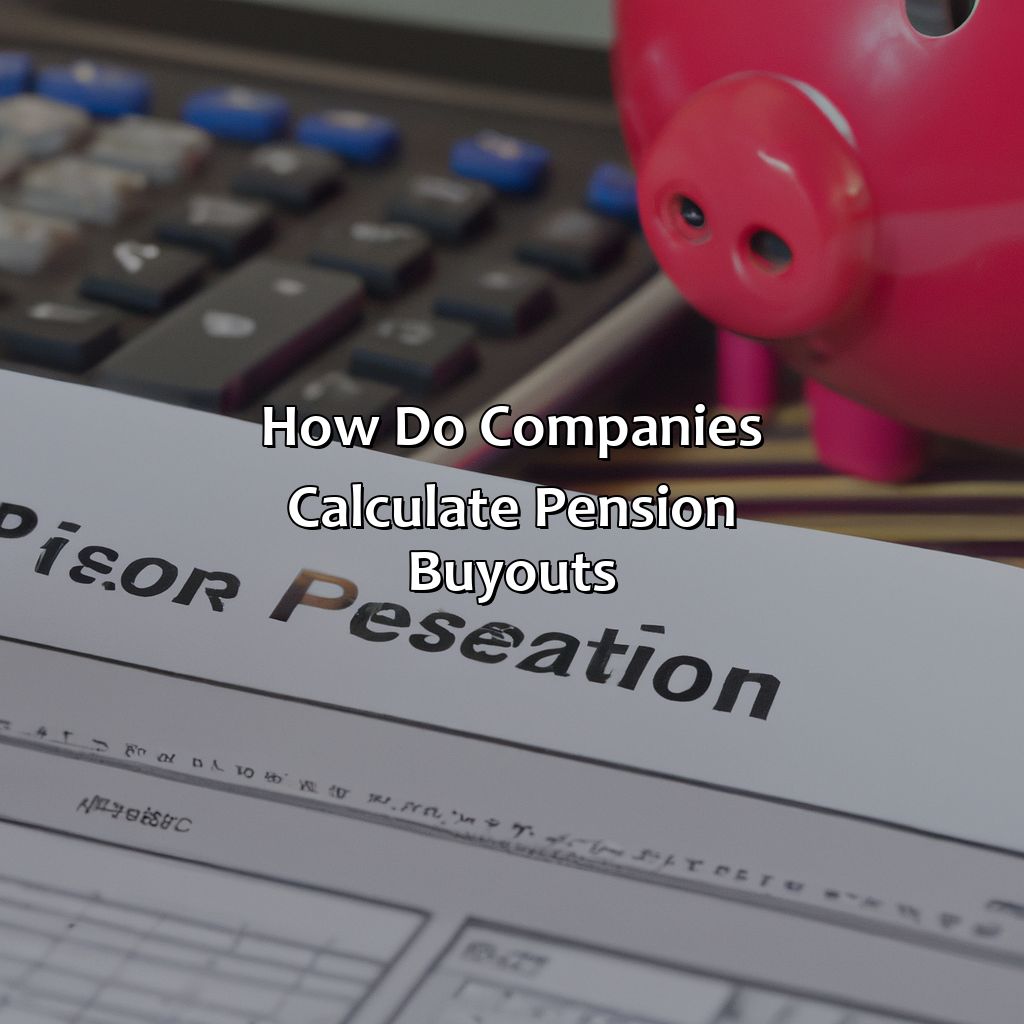How Do Companies Calculate Pension Buyouts?
Key Takeaway:
- Calculating pension buyouts involves considering factors such as the pensioner’s age and life expectancy, interest rates and inflation, and the company’s financials and funding status, among others.
- There are several methods of calculating pension buyouts, including lump sum payment, annuity purchase, and a combination of both. The choice of method depends on various factors, including the pensioner’s preferences and the company’s financial situation.
- There are implications for both pensioners and companies in pension buyouts, including advantages and disadvantages for pensioners and financial impact and regulatory considerations for companies.
Feeling lost when it comes to pension buyouts? You’re not alone. Knowing how to calculate a pension buyout can be a challenge, so learn the steps to make the process easier. Discover how companies measure and assess pension buyouts.
Overview of pension buyouts
Pension buyouts are a calculated decision that companies make when considering long-term financial liabilities. The process involves analyzing an individual’s pension plan and determining the present value of future pension payments. The present value is then compared to the cost of offering a lump sum payment to the individual, which is typically less than the present value. This allows companies to reduce their future financial obligations and instead offer a one-time payment to the individual. Such decisions should be made with careful consideration of all the possibilities and outcomes.
As a result of pension buyouts, individuals may have to weigh the risks of taking a one-time payment versus continuing to receive regular pension payments based on the plan’s terms. Some factors that may influence their decision include their personal financial situation, their age, their health, and their existing retirement savings.
It is worth noting that pension buyouts may not be possible for some individuals, especially those who have already started receiving pension payments. However, companies may still offer these individuals a lump sum payment in exchange for reduced pension payments in the future.
A company once faced financial difficulties and decided to offer pension buyouts to its employees to reduce its financial obligations. While many employees chose to take the lump sum payment, some were hesitant due to the risk of outliving their lump sum payment. The company sought to alleviate their concerns by offering them the option of purchasing a lifetime annuity with their lump sum payment. This ensured that they would continue receiving regular payments for the rest of their lives, thus reducing their risk.
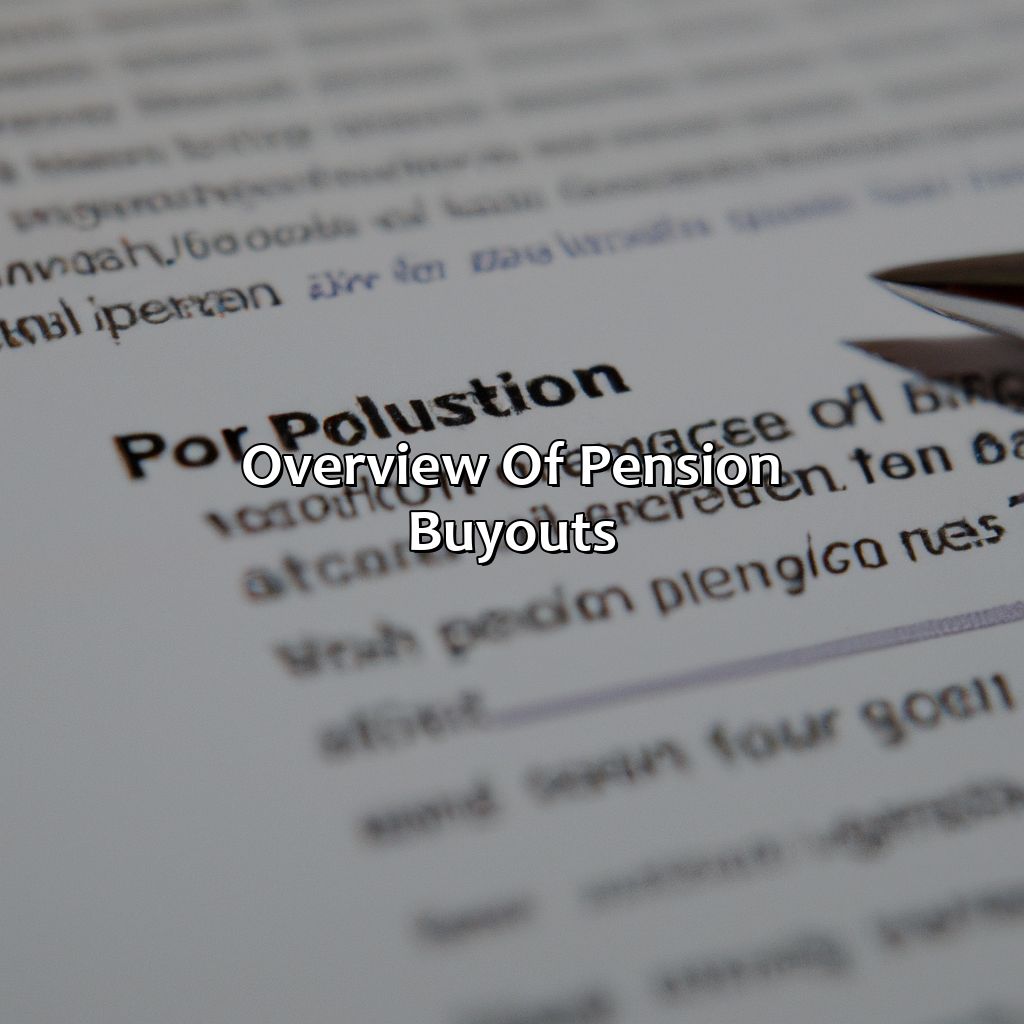
Image credits: retiregenz.com by David Duncun
Factors considered in calculating pension buyouts
Calculating a pension buyout accurately needs factoring in several variables. Let’s delve into the three major sub-sections:
- Age and life expectancy of the pensioner
- Interest rates and inflation
- Company financials and funding status.
Knowing the value of each factor can help make wise decisions about your pension and ensure a comfortable retirement.
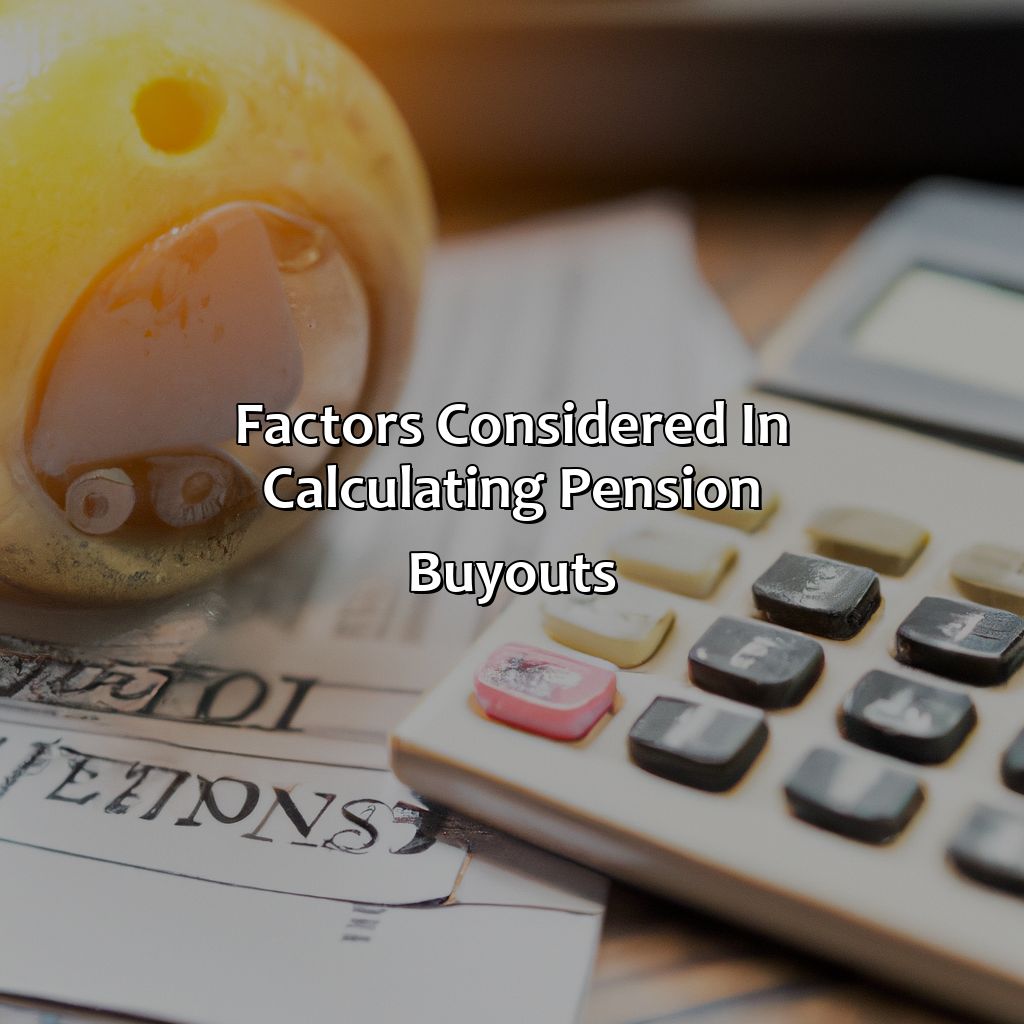
Image credits: retiregenz.com by Yuval Arnold
Age and life expectancy of the pensioner
The age and projected lifespan of a retiree are vital factors calculated by companies when determining pension buyouts. These factors play a considerable role in deciding the lump sum amount, which will be paid out to the pensioner. Companies use specific actuarial calculations and mortality tables, taking into account the current interest rates, projected inflation rates, and life expectancy to estimate the value of the pension buyout.
Below is a table depicting how companies consider age and life expectancy of a retiree when calculating pension buyouts:
| Factors | Description |
|---|---|
| Age | Calculated based on the number of years since the retiree’s birthdate |
| Projected Lifespan | Estimated lifespan based on factors such as current health status and lifestyle habits |
Companies also tend to consider unique factors like employment history, future financial plans, long-term care insurance needs before determining how much pension buyout would suit best for an individual.
Interestingly, large corporations have been known to offer early retirement packages that combine enhanced severance payments with their traditional defined benefit plans. Overall, companies weigh various factors to determine pension buyout amounts that offer security while meeting projected retirement needs for retirees.
Interest rates may rise and fall, but the inflation in retirement homes remains constant.
Interest rates and inflation
The calculation of pension buyouts depends significantly on the current economic situation, influenced mainly by interest rates and inflation. These factors determine the amount of money required by an insurance company to make periodic payments as per the pension plan agreement.
Various components are used to calculate pension buyouts, including retirement age, life expectancy, lump-sum payment amount, and discount rates. Interest rates and inflation play a significant role in discount rate calculation, as they have an impact on projected cash flows.
It’s crucial to keep in mind that higher interest rates may result in lower discount rates and consequently increase the lump-sum payout for pension buyouts. On the other hand, high inflation can result in a more significant lump-sum payout due to a reduction in the actual value over time.
If you thought balancing your personal budget was stressful, just wait till you see the financial gymnastics companies go through to fund pension buyouts.
Company financials and funding status
When evaluating pension buyouts, it is essential to consider a company’s financial standing and funding status. The following table showcases how companies assess their financial status.
| Category | Funding Status |
|---|---|
| Pension Fund Size | The amount of money in the pension fund |
| Asset Allocation | The types of investments made with the fund’s assets |
| Liabilities | The total amount of payments due to current employees |
It is crucial to note that each company has its unique method of calculating pension buyouts based on their financial and funding situation. This helps determine the exact compensation or lump sum a retiree may receive when offered a pension buyout.
According to the Society for Human Resource Management (SHRM), “funding-based regulations can impact plan sponsors’ balance sheets, income statements, and cash flow.” Therefore, it is wise to approach buyout offers with caution and seek professional advice before making any decisions.
In fact, according to Financial Planning Magazine consultations with experts before making pension decisions are necessary because it helps retirees navigate complex retirement plans legally while mitigating the chances of making incorrect decisions that could lead to tax obligations or unexpected penalties.
Source: Financial Planning Magazine.
Let’s hope the math behind calculating pension buyouts is more reliable than my high school algebra skills.
Methods of calculating pension buyouts
To comprehend how businesses work out pension buyouts, you must be aware of the various techniques obtainable. To choose the ideal option for you, you should analyze all possibilities. There are three divisions that concentrate on:
- Lump sum payment
- Annuity purchase
- A combination of lump sum and annuity
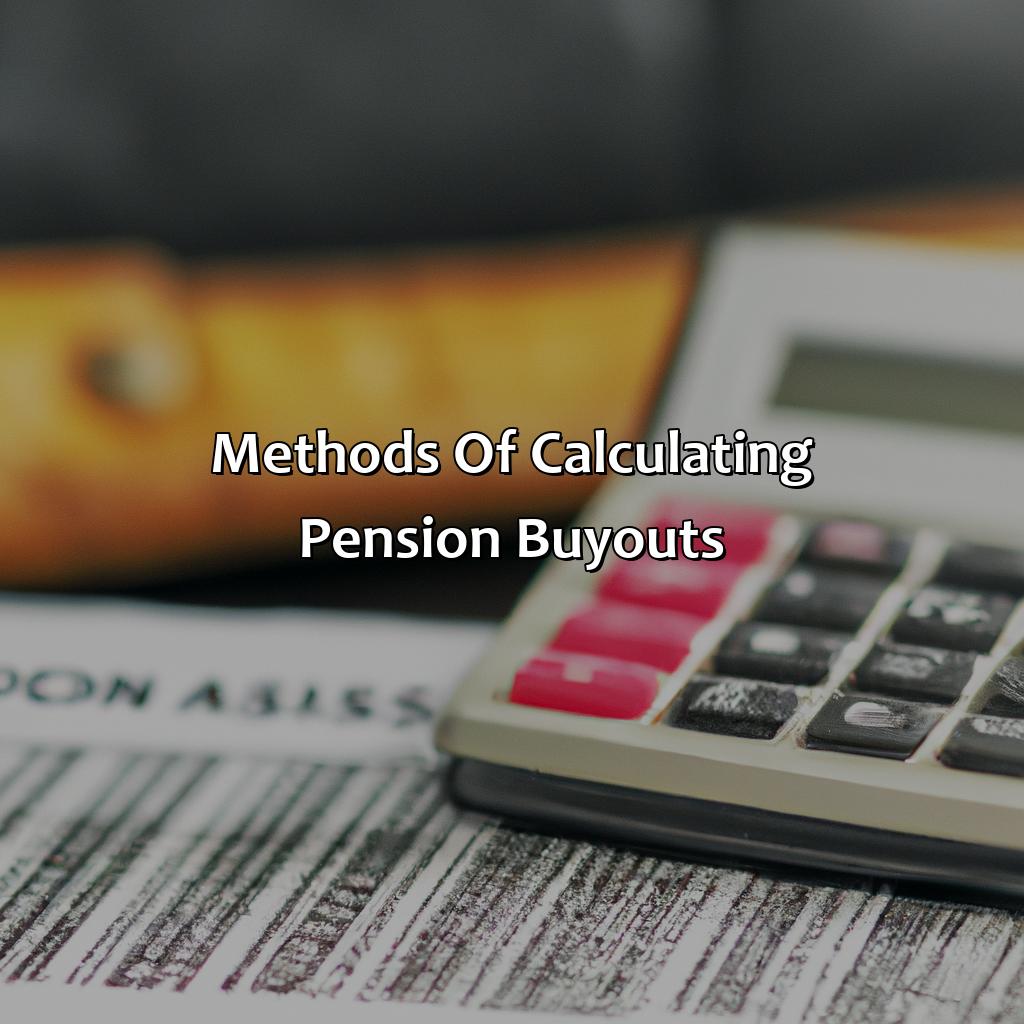
Image credits: retiregenz.com by David Woodhock
Lump sum payment
When considering retirement, many employees may choose a one-time payment instead of a monthly pension. This payment is known as a Single-Cash-Amount, and it is calculated considering several factors like age, service years, and estimated life expectancy. The companies use various actuarial methods to calculate this amount that would provide an equivalent benefit to the employee over their remaining lifetime.
Apart from the typical considerations, a significant aspect that affects these payouts’ calculation is the prevailing interest rates in the market. Companies adjust the lump sum payout amount according to the current low-interest environment or high-interest environment as it affects the amount needed for funding pensions.
It’s essential to note that if an employee chooses this option, they would be forfeiting regular pension payments for themselves and any surviving beneficiary after their death.
Say goodbye to living like royalty in retirement and hello to a lifetime supply of ramen noodles with annuity purchases.
Annuity purchase
Pension annuity buyouts refer to the practice of buying out or transferring pension obligations to an insurance company or other third party. Companies undertake these transactions to reduce their pension funding risks and obligations. Annuity purchases involve the payment of a one-time lump sum that is sufficient to fund the cost of benefit payments for the lifetime of each covered participant.
To calculate the cost of pension annuity buyouts, companies employ various methods that factor in variables such as participant age, gender, and life expectancy. Some models also incorporate interest rate assumptions and provide flexibility in terms of triggering certain benefit payment events. Employers may use internal actuarial departments or external consultants to determine current liability values and future funding requirements.
Companies can further reduce pension risk by converting their defined benefit plans into defined contribution plans, such as 401(k)s. This strategy transfers investment and longevity risks from employers to plan participants, resulting in a more predictable cost structure over time.
For companies contemplating annuity purchases, we suggest first undertaking thorough analyses of participants’ rights and interests. Engaging with knowledgeable legal counsel can help parties navigate complex legal issues while achieving more equitable outcomes over time. Additionally, building relationships with reputable insurance carriers can help reduce costs by leveraging competitive product offers and premium rates.
Who says you can’t have your cake and eat it too? With a combination of lump sum and annuity, you can have your retirement and splurge on a few desserts along the way.
Combination of lump sum and annuity
Through a blend of an immediate lump sum payout and an annuity, a fascinating option to consider is to create a structured combination of both. This enables the critically important flexibility to customize your pension buyout based on your specific needs.
The amount of each type of payment chosen will be based on various factors, such as how much income you want, how soon you want it and whether or not you have other income sources. This combination method rule has two benefits: first, it enables basic expenses to be paid via the reliable periodic income provided by the annuity portion. Second, it also provides greater purchasing power through the initial infusion of cash that you receive through the lump sum payment.
In determining which combination is right for you, a qualified financial advisor can be extremely helpful in assisting with this calculation. Keep in mind that while this strategy can help provide additional security and financial peace of mind during retirement years, an individual s individual situation should always be accounted for when considering all options.
A certain case before the US Supreme Court called Putnam v. AARP in 2019 challenged fiduciaries ability under ERISA to include these types of products in company-sponsored defined contribution plans. Despite opposition from interested parties representing both labor and business groups alike, the court supported these policies as long as they are conducted prudently with impartiality towards all plan participants.
Looks like pensioners need to book a trip to Vegas if they want to feel like they’re getting a fair deal on their buyout, because the math behind it is just a big gamble for both parties.
Implications for pensioners and companies
Let’s look at the pros and cons for pensioners and the financial, legal, and regulatory effects for companies. This will give us a full grasp of how buyouts affect all involved. Pensioners might gain advantages. Companies must remember the implications.
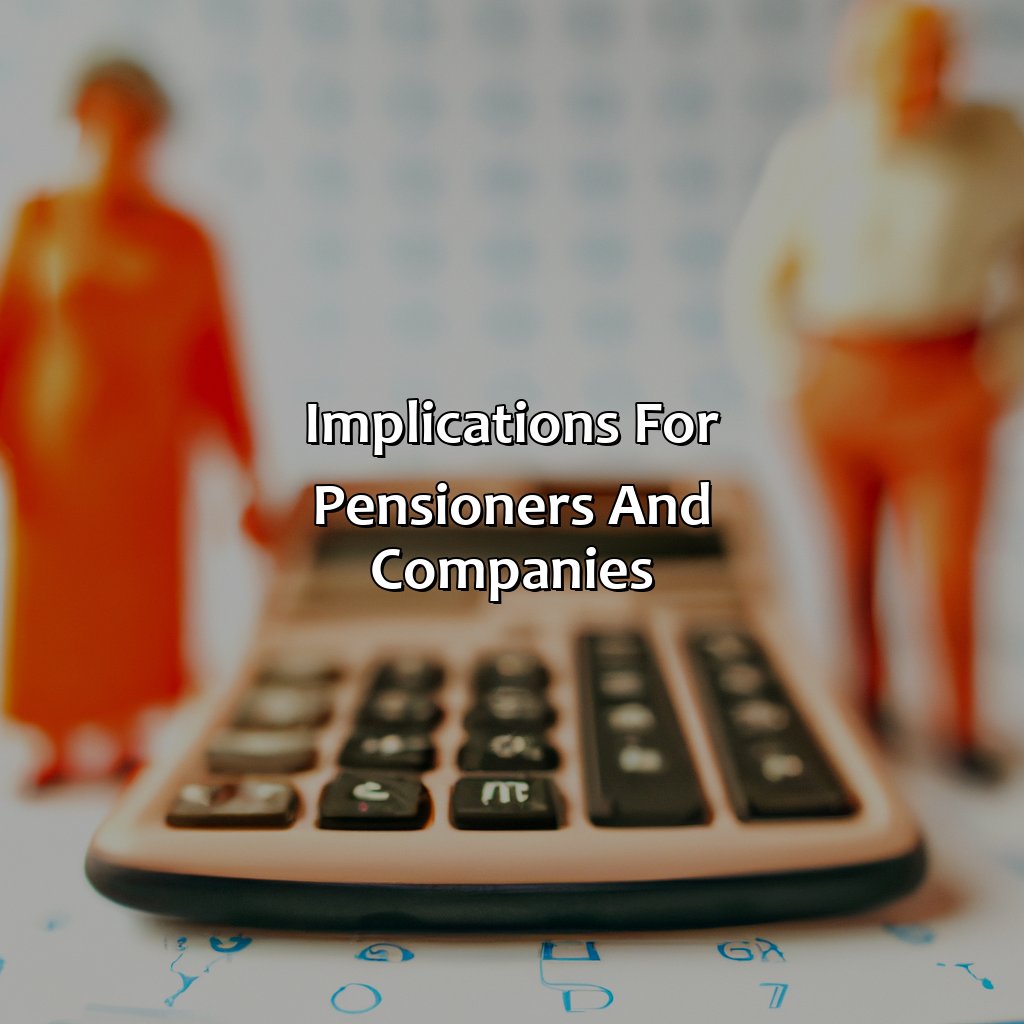
Image credits: retiregenz.com by Adam Duncun
Advantages and disadvantages for pensioners
For pensioners, there are both advantages and disadvantages to consider when it comes to calculating pension buyouts. These aspects can impact their financial future significantly.
Advantages and disadvantages for pensioners:
- Opportunities to access a lump sum of cash in one go can be very advantageous for retirees.
- However, the amount that is offered may not be sufficient to cover all living expenses, potentially leaving pensioners with limited income streams.
- A significant advantage is the ability of individuals to manage their pensions as they see fit, instead of relying on company decisions or market variations.
- The disadvantage is that pensioners will lose the guarantee of regular income, which could initially cause anxiety and worry.
It is essential for senior citizens who choose to take advantage of this opportunity to carefully evaluate its pros and cons before deciding. By analyzing their financial position and identifying the benefits that are suitable for them, they can make a well-informed choice about whether a pension buyout is appropriate for their current situation.
If you are concerned about your financial future and do not want to miss out on opportunities like these that could change it for the better, consult a professional or financial advisor who can guide you accordingly. Take control over your retirement plans by actively assessing every possibility available – after all, retirement should be comfortable rather than overwhelming!
Companies calculating pension buyouts is like playing a game of financial Jenga – only the retirees are the ones who end up losing.
Financial impact and risks for companies
For companies, the monetary implications and hazards are significant when it comes to pension buyouts. Failing or undervaluing early retirement incentives might result in property damage and reduced profitability. In contrast, paying out more than demanded could cause liquidity concerns and lowered stock prices.
Experts warn that companies should consider personalized approaches since ample factors could influence the final numbers. Pension buyout computations must account for bespoke mortality rates, interest rate differences, credit ratings, annuity types, legal constraints such as collective bargaining agreements, and more.
Moreover, inadequate planning may lead to regulatory breaches and lawsuits. Companies must pay careful attention to relevant legislation such as ERISA laws in the US. Non-compliance entails severe financial penalties and reputation loss.
Don’t risk losing your credibility among employees and stakeholders by mismanaging pension buyouts. Seek expert advice on how best to approach these complex financial decisions that can make or break a company’s future success.
Legal and regulatory considerations: where paperwork goes to die and lawyers go to thrive.
Legal and regulatory considerations
When it comes to pension buyouts, there are certain legal and regulatory considerations that companies must take into account. These include compliance with relevant laws, regulations, and accounting standards concerning pension plans. It is essential for companies to ensure that the calculation of pension benefits meets legal and accounting requirements to avoid potential legal liabilities.
In addition to this, companies must also consider the impact of any changes in regulations or market conditions on the cost of offering defined benefit pensions. This can factor into the calculation of buyout offers for pensioners.
It’s important for companies to stay informed about evolving regulations around pensions and regularly review their plans to remain compliant. Neglecting these considerations can lead to financial loss or legal issues.
As a retiree, understanding how your pension benefits may be affected by these legal and regulatory considerations can help you make informed decisions about whether or not to accept a buyout offer from your employer. Don’t miss out on your hard-earned retirement benefits by ignoring these important implications.
Five Facts About How Companies Calculate Pension Buyouts:
Pension buyouts are calculated based on a number of factors, including your life expectancy, the size of your pension, and the strength of the plan sponsor. (Source: Investopedia)
Pension buyouts are often offered as a lump sum payment, rather than as a traditional pension plan annuity. (Source: The Balance)
When considering a pension buyout, it is important to weigh the pros and cons, such as potential tax implications and loss of guaranteed income. (Source: Forbes)
Pension buyouts are becoming more common as companies look to reduce their pension liabilities and shift the risk to retirees. (Source: CNBC)
Pension buyout offers can vary widely, so it is important to compare your options and consider seeking professional advice before making a decision. (Source: Kiplinger)
FAQs about How Do Companies Calculate Pension Buyouts?
How do companies calculate pension buyouts?
Companies use several factors to calculate pension buyouts, including an employee’s age, life expectancy, current interest rates, and the specific terms of the pension plan.
What is a pension buyout?
A pension buyout is an offer made by a company to a pension plan participant to exchange their future pension payments for a lump sum payment from the company.
Why do companies offer pension buyouts?
Companies offer pension buyouts to reduce their pension liabilities, which can be expensive to maintain and can pose a financial risk to the company in the long term. By offering pension buyouts, companies can transfer the pension risk to the participants.
How does accepting a pension buyout affect my retirement income?
Accepting a pension buyout can affect your retirement income depending on the terms of the buyout. You may receive a lump sum payment that you can invest to generate income, or you may receive a reduced pension payment from the company.
Should I take a pension buyout?
Whether or not to take a pension buyout depends on your individual financial situation and the terms of the buyout offer. It’s important to speak with a financial advisor to understand the pros and cons of a pension buyout.
What happens if I don’t accept a pension buyout?
If you don’t accept a pension buyout, you will continue to receive your pension payments as outlined in the terms of the pension plan. However, the pension plan may become underfunded, and there may be a risk of reduced benefits or plan termination in the future.
 Checkout this IRS Loophole
Checkout this IRS Loophole 
